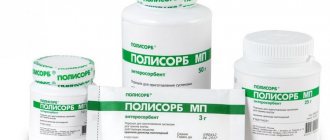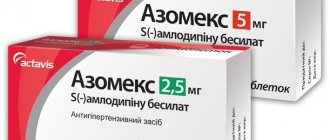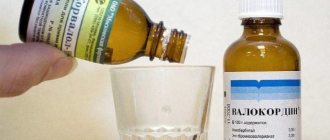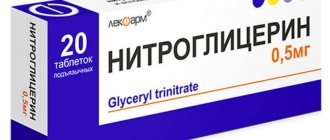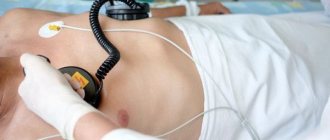Pharmacological properties of the drug Sotahexal
SotaHexal is a non-selective β-adrenergic receptor blocker that acts on β1- and β2-adrenergic receptors. It has a pronounced antiarrhythmic effect, the mechanism of which is to increase the duration of the action potential and the absolute refractory period in all parts of the conduction system of the heart (Class III antiarrhythmic drugs). Reduces heart rate and myocardial contractility, slows AV conduction, and reduces the absolute refractory period. By blocking β2-adrenergic receptors, it increases the tone of smooth muscles of the bronchi and blood vessels. After oral administration, 75–90% of sotalol hydrochloride is absorbed from the gastrointestinal tract. Due to the lack of effect of the first phase, absolute bioavailability is 75–90%. The time to reach maximum concentration in blood plasma is 2–3 hours. The volume of distribution is 1.6–2.4 l/kg. Sotalol does not bind to plasma proteins and is not metabolized in the body. Up to 90% of the dose taken is excreted unchanged by the kidneys, the rest is excreted in feces. Renal clearance is 120 ml/min and corresponds to the total clearance of the body. The half-life is 10–20 hours. If renal function is impaired, the elimination of sotalol may increase to 42 hours, which requires a reduction in the dose of the drug.
Comparison of ease of use of Sotahexal and Sotalol
This includes dose selection taking into account various conditions and frequency of doses. At the same time, it is important not to forget about the release form of the drug; it is also important to take it into account when making an assessment.
The ease of use of Sotahexal is approximately the same as Sotalol. However, they are not convenient enough to use.
The drug ratings were compiled by experienced pharmacists who studied international research. The report is generated automatically.
Last update date: 2021-01-27 08:01:28
Indications for use of the drug Sotahexal
Supraventricular tachyarrhythmias accompanied by clinical symptoms (including atrioventricular, nodal, paroxysmal tachycardias in WPW syndrome or paroxysmal atrial fibrillation arrhythmias); maintaining normal sinus rhythm after stopping atrial fibrillation or flutter; severe ventricular heart rhythm disturbances, which are accompanied by severe clinical symptoms (tachyarrhythmias) and their prevention with proven effectiveness; arrhythmias caused by excess circulation of catecholamines or increased sensitivity to catecholamines.
Use of the drug Sotahexal
Dose adjustment of SotaHexal in cases of ventricular arrhythmia should be carried out under the constant supervision of a cardiologist; it can be carried out with appropriate equipment in the cardiac emergency room and continuous monitoring. During treatment, screening tests should be carried out at regular intervals (for example, standard or long-term ECG). If individual ECG parameters are changed, therapy must be carefully analyzed, for example, in cases of QRS QT interval by more than 25% , a 50% increase in PQ QT by more than 500 ms , an increase in the number of attacks or severity of arrhythmia. Treatment of tachyarrhythmias The recommended starting dose of SotaHexal is 40 mg 2 times a day. Subsequently, the drug is prescribed in a daily dose of 160–320 mg, divided into 3 doses. If necessary, the dose of the drug can be increased to 160 mg 3 times a day. Severe ventricular heart rhythm disturbances with severe tachyarrhythmia The initial dose of SotaHexal is 80 mg 2 times a day. If necessary, the daily dose can be increased to 80 mg 3 times a day or up to 160 mg 2 times a day. In case of insufficient effectiveness in the treatment of arrhythmia that threatens the patient's life, the daily dose of SotaHexal can be increased to 480 mg, divided into 2 doses. In these cases, the dose should be increased only if the potential benefit outweighs the potential risk of severe adverse reactions (especially proarrhythmic effects). Atrial fibrillation The initial dose of SotaHexal is 80 mg 2 times a day. If necessary, the daily dose can be increased to 80 mg 3 times a day. In cases of paroxysmal atrial fibrillation, this dose should not be exceeded. If in patients with chronic atrial fibrillation the effectiveness of treatment is insufficient, the dose of sotalol hydrochloride can be increased to a maximum of 160 mg 2 times a day. The dose can only be increased at minimum two to three day intervals. Recommended doses for renal failure In severe renal failure, the use of sotalol hydrochloride is recommended only with regular monitoring of the ECG and the concentration of the drug in the blood serum. If creatinine clearance decreases to 10–30 mol/min (serum creatinine 2–5 mg/dL), a dose reduction of 50% is recommended. If the value of this indicator is less than 190 ml/min (serum creatinine ≤5 mg/dl), then a dose reduction by 1/4 is recommended. SotaHexal tablets should be swallowed without chewing, with a sufficient amount of liquid (for example, a glass of water) before meals. When adjusting the dose in patients after myocardial infarction or with severe cardiac pathology, particularly careful monitoring (for example, using monitoring) should be established. During treatment, appropriate testing should be carried out at regular intervals. In patients with coronary artery disease and/or arrhythmia, as well as after prolonged use of the drug, treatment should be discontinued gradually, since abrupt withdrawal may lead to a worsening of the clinical picture of the disease. The duration of treatment is determined depending on the clinical course of the disease and the patient’s condition.
Comparison of side effects of Sotahexal and Sotalol
Side effects or adverse events are any adverse medical event that occurs in a subject after administration of a drug.
Sotahexal has almost the same level of adverse events as Sotalol. They both have few side effects. This implies that the frequency of their occurrence is low, that is, the indicator of how many cases of an undesirable effect of treatment are possible and registered is low. The undesirable effect on the body, the strength of influence and the toxic effect of Sotahexal are similar to Sotalol: how quickly the body recovers after taking it and whether it recovers at all.
Contraindications to the use of the drug Sotahexal
Chronic heart failure stage IIB–III; acute myocardial infarction; shock; arterial hypotension; AV block II and III degrees; sinoatrial block; sick sinus syndrome; bradycardia (heart rate less than 50 beats/min); prolongation of the QT ; obliterating vascular diseases; obstructive airway diseases; metabolic acidosis; swelling of the larynx; severe allergic rhinitis; untreated pheochromocytoma; hypokalemia and hypomagnesemia; hypersensitivity to the drug and sulfonamides; a rare hereditary form of galactose intolerance, lactase deficiency or glucose-galactose malabsorption. For patients treated with sotalol (except for intensive drug treatment), intravenous administration of calcium antagonists such as verapamil or diltiazem or other antiarrhythmic drugs (such as disopyramide) is contraindicated.
Side effects of the drug Sotahexal
cardiovascular system: chest pain, undesirable decrease in blood pressure, increased symptoms of heart failure, bradycardia, tachycardia, ECG changes, impaired atrioventricular conduction, syncope or presyncope, edema; very rarely - increased frequency of angina attacks and impaired peripheral perfusion; proarrhythmic effects are possible - in the form of changes or intensification of arrhythmia (can lead to significant impairment of cardiac activity); arrhythmogenic effects (especially often noted in patients with life-threatening arrhythmia and impaired left ventricular function); ventricular tachyarrhythmia (sotalol hydrochloride prolongs the QT ); Gastrointestinal tract: taste disturbance, abdominal pain, nausea, vomiting, diarrhea, dyspepsia, xerostomia. Metabolic disorders: hypoglycemia; increase in total cholesterol and triglycerides, decrease in cholesterol in the HDL fraction. Nervous system: anxiety, confusion, sudden changes in mood, hallucinations, frequent dreams, depression, vertigo, headache, sleep disturbance, fever, feeling tired, paresthesia and cold sensations in the extremities. Hypersensitivity reactions: erythema, itching, exanthema; very rarely - alopecia, psoriasis-like exanthema or increased severity of psoriasis symptoms; anaphylactic reactions. Respiratory system: dyspnea; rarely - allergic bronchitis with fibrosis, temporary hearing loss. Visual organs: dysopia; rarely - conjunctivitis, keratoconjunctivitis, decreased severity of tear secretion. Musculoskeletal system: muscle spasm or myasthenia gravis.
Special instructions for the use of the drug Sotahexal
Treatment with sotalol is carried out under the control of heart rate, blood pressure, and ECG. Constant medical monitoring of patients is necessary in the following cases:
- in case of renal failure (it is necessary to monitor the concentrations of creatinine and sotalol hydrochloride in the blood serum at certain intervals);
- in diabetes mellitus with significant fluctuations in blood glucose levels, while the symptoms of hypoglycemia can be masked (it is necessary to monitor the concentration of glucose in the blood);
- while following strict diets;
- with hyperthyroidism (in this case, adrenergic symptoms can be masked);
- in case of peripheral perfusion disorders;
- for pheochromocytoma (the drug can be used only after blockade of α-adrenergic receptors).
During the period of use of sotalol, patients who have suffered a myocardial infarction or patients with impaired myocardial contractility should be under the supervision of a cardiologist. When discontinuing the drug, the dose is reduced gradually; Particular care is taken when stopping treatment in patients with coronary artery disease and cardiac arrhythmias, as well as after prolonged use of the drug. The question of discontinuing or changing the dosage regimen of the drug in patients with life-threatening cardiac arrhythmias can only be decided by a doctor. Sotalol may increase sensitivity to allergens and increase the severity of anaphylactic reactions, which must be taken into account when treating patients with a history of severe hypersensitivity reactions and those on desensitization therapy. Severe proarrhythmia (sustained ventricular tachycardia, ventricular flutter/fibrillation), predominantly dose-dependent, is noted mainly at the beginning of therapy, as well as with increasing doses of the drug. In cases of severe diarrhea or concomitant use of drugs that cause loss of magnesium and/or potassium, it is necessary to monitor the electrolyte balance and acid-base balance. Since sotalol hydrochloride is found in urine, photometric determination of metanephrine may result in overestimated values. In patients who have taken sotalol, as well as with suspected pheochromocytoma, determination of metanephrine in urine should be carried out using the HPLC method with solid phase extraction. When treating elderly patients, it is necessary to take into account possible renal failure and make appropriate dose adjustments. Pregnancy and breastfeeding Since there is no experience with the use of sotalol during pregnancy, the drug can be prescribed during this period only with an accurate diagnosis and absolute indications for its use. It must be taken into account that sotalol hydrochloride crosses the placenta and reaches pharmacologically active concentrations in fetal tissues, as a result of which the fetus or infant may develop undesirable effects such as bradycardia, hypotension and hypoglycemia. For this reason, therapy should be interrupted 48–72 hours before the expected date of delivery. After birth, the child must be closely monitored for some time (beta receptor blockade may develop). Breastfeeding should be stopped during treatment with the drug. Effect on the ability to drive vehicles and other mechanisms The drug can change the body's reaction rate, which affects the ability to drive vehicles and other mechanisms, especially at the beginning of treatment.
Comparison of addiction between Sotahexal and Sotalol
Like safety, addiction also involves many factors that must be considered when evaluating a drug.
So, the totality of the values of such parameters as “syndrome o” in Sotahexal is quite similar to the similar values in Sotalol. Withdrawal syndrome is a pathological condition that occurs after the cessation of intake of addictive or dependent substances into the body. And resistance is understood as initial immunity to a drug; in this it differs from addiction, when immunity to a drug develops over a certain period of time. The presence of resistance can only be stated if an attempt has been made to increase the dose of the drug to the maximum possible. At the same time, Sotahexal has quite a small value of “syndrome”, however, the same as Sotalol.
Drug interactions Sotahexal
Concomitant use with calcium antagonists (verapamil or diltiazem), other antiarrhythmic drugs (disopyramide), as well as beta-adrenergic receptor blockers, calcium ion antagonists (such as nifedipine) can lead to a significant decrease in blood pressure and heart rate. The intravenous administration of calcium ion antagonists such as verapamil or diltiazem, as well as other antiarrhythmic drugs (disopyramide), is contraindicated, with the exception of intensive care. Combination therapy with class I antiarrhythmic drugs (especially quinidine-like drugs) or other class III antiarrhythmic drugs can cause intense prolongation of the Q-T on the ECG and at the same time increase the risk of ventricular arrhythmia. Concomitant use with drugs that cause intense prolongation of QT on the ECG (tricyclic and tetracyclic antidepressants (imipramine, maprotiline), antihistamines (astemizole, terfenadine), quinolone antibiotics (for example, sparfloxacin), macrolide antibiotics (erythromycin), probucol, haloperidol and gelofantrine), leads to an increased risk of proarrhythmic effects (“flutter-flickering”). When used simultaneously with norepinephrine or MAO inhibitors, as well as after discontinuation of clonidine, blood pressure may increase sharply. When using SotaHexal simultaneously with β2-adrenergic receptor agonists, such as salbutamol, terbutaline and isoprenaline, it may be necessary to increase the dose of the latter. Concomitant use with tricyclic antidepressants, barbiturates, phenothiazines, narcotics, as well as antihypertensive drugs, diuretics and vasodilators can lead to a sharp decrease in blood pressure. The negative chronotropic and dromotropic effects of sotalol may be enhanced by concomitant administration of reserpine, clonidine, alpha-methyldopa, ganfacine and cardiac glycosides. The neuromuscular blockade caused by tubocurarine can be increased by β-adrenergic receptor blockade. Concomitant use with insulin or oral antibiotics, especially during strenuous exercise, may induce hypoglycemia and mask its symptoms. The risk of arrhythmia increases with the simultaneous administration of potassium-sparing diuretics (furosemide, hydrochlorothiazide) or other drugs, the use of which causes a loss of potassium or magnesium.
Sotahexal tablet 80 mg pack cont cell/pack card x20
Trade name: SotaHexal
International name: Sotalol
Release forms: tablets 80, 160 mg (blisters)
Composition: sotalol 80, 160 mg
Pharmacological group: beta-blocker
Pharmacological group according to ATK: C07AA07 (Sotalol)
Pharmacological action: antiarrhythmic, beta-adrenergic blocking,
Indications: Ventricular extrasystole, spontaneous and induced ventricular tachyarrhythmias, supraventricular tachycardia (including WPW syndrome), paroxysmal atrial fibrillation.
Dosage regimen: Inside, intravenously.
Orally, the tablets should be taken without chewing, with a sufficient amount of liquid.
As an antianginal drug - 80 mg 2 times a day.
For arterial hypertension, the initial dose is 80 mg/day; if necessary, the dose is increased by 80 mg once a week; at a dose of 320 mg or higher, the drug can be taken once.
For the treatment of ventricular tachyarrhythmias - 80 mg 2 times a day. If effectiveness is insufficient, the dose is increased to 80 mg 3 times a day or 160 mg 2 times a day.
For severe arrhythmias, the maximum daily dose is 480 mg (up to 640 mg), divided into 2-3 doses. Typically the minimum effective dose is 320 mg/day.
IV - the initial dose for adults is 20 mg (2 ml solution for injection). Administration should be done slowly, over 5 minutes, under the control of heart rate, blood pressure and ECG parameters. After 20 minutes, depending on the patient’s condition and the therapeutic effect, the remaining 20 mg of the drug is administered slowly (1 mg/min).
The total maximum dose is 1.5 mg/kg and can be administered over 5-15 minutes.
Selection of doses for patients with impaired renal function should be carried out taking into account the value of glomerular filtration (GFR). With a CC value of 10-30 ml/min (serum creatinine 2-5 mg/dl), the dose should be reduced by 2 times, and with a CC value of less than 10 ml/min (serum creatinine more than 5 mg/dl) - 4 times.
Contraindications: Hypersensitivity, acute HF or decompensated CHF, cardiogenic shock, AV block II-III stage, SA block, SSSU, sinus bradycardia (heart rate less than 55/min), Prinzmetal's angina, cardiomegaly (without signs of HF), arterial hypotension (systolic Blood pressure less than 90 mm Hg, especially with myocardial infarction), COPD, bronchial asthma (severe), occlusive diseases of peripheral vessels (complicated by gangrene, “intermittent” claudication or pain at rest), diabetes mellitus with ketoacidosis, metabolic acidosis, simultaneous use of MAO inhibitors, lactation period.
Side effects: From the nervous system: increased fatigue, weakness, dizziness, headache, drowsiness or insomnia, nightmares, depression, anxiety, confusion or short-term memory loss, hallucinations, asthenia, myasthenia, paresthesia in the extremities (in patients with “intermittent” claudication and Raynaud’s syndrome), tremor.
From the senses: extremely rarely - impaired visual acuity, decreased secretion of tear fluid, dry and sore eyes, keratoconjunctivitis.
From the cardiovascular system: sinus bradycardia, palpitations, impaired myocardial conduction, AV block (up to the development of complete transverse block and cardiac arrest), arrhythmias, weakening of myocardial contractility, development (worsening) of CHF, decreased blood pressure, orthostatic hypotension, manifestation of vasospasm (increased impairment peripheral circulation, coldness of the lower extremities, Raynaud's syndrome), chest pain, in rare cases - increased attacks of angina, ventricular paroxysmal tachycardia of the "pirouette" type (the risk of development is higher with the combined use of drugs that prolong the QT interval or hypokalemia).
From the digestive system: dryness of the oral mucosa, nausea, vomiting, pain in the epigastric region, flatulence, constipation or diarrhea, liver dysfunction (dark urine, yellowness of the sclera or skin, cholestasis), changes in taste.
From the respiratory system: nasal congestion, rhinitis, difficulty breathing, laryngo- and bronchospasm.
From the endocrine system: hyperglycemia (in patients with non-insulin-dependent diabetes mellitus), hypoglycemia (in patients receiving insulin or following a strict diet), hypothyroid state.
Allergic reactions: itching, skin rash, urticaria.
From the skin: increased sweating, skin hyperemia, exanthema, alopecia, psoriasis-like skin reactions, exacerbation of psoriasis symptoms.
Laboratory indicators: thrombocytopenia (unusual bleeding and hemorrhage), agranulocytosis, leukopenia, changes in enzyme activity, bilirubin concentration.
Effect on the fetus: intrauterine growth retardation, hypoglycemia, bradycardia.
Other: back pain, arthralgia, weakened libido, decreased potency, withdrawal syndrome (increased angina attacks, increased blood pressure).
Overdose. Symptoms: severe bradycardia, dizziness, AV block, marked decrease in blood pressure, fainting, arrhythmia, ventricular extrasystole, cyanosis of fingernails or palms, convulsions, difficulty breathing, bronchospasm.
Treatment: gastric lavage, administration of activated charcoal, in case of impaired AV conduction - 1-2 mg of atropine is administered intravenously, if the effectiveness is low, a temporary pacemaker is installed, in case of ventricular extrasystole - lidocaine (class Ia drugs are not used), if blood pressure decreases, the patient should be in the Trendelenburg position. If there are no signs of pulmonary edema, plasma-substituting solutions are administered intravenously; if ineffective - epinephrine, dopamine, dobutamine; for heart failure - cardiac glycosides, diuretics, glucagon; for convulsions - intravenous diazepam; for bronchospasm - inhaled or parenteral beta-adrenergic stimulants.
Pharmacodynamics: Non-selective beta-blocker, has hypotensive, antianginal, antiarrhythmic effects.
By blocking beta-adrenergic receptors (75% beta1- and 25% beta2-adrenergic receptors), it reduces the formation of cAMP from ATP stimulated by catecholamines, resulting in a decrease in intracellular Ca2+ current. It has a negative chrono-, dromo-, batmo- and inotropic effect (reduces heart rate, inhibits conductivity and excitability, reduces myocardial contractility).
OPSS at the beginning of the use of a beta-blocker (in the first 24 hours) increases (as a result of a reciprocal increase in the activity of alpha-adrenergic receptors and the elimination of stimulation of beta2-adrenergic receptors in the vessels of skeletal muscles), which after 1-3 days returns to the original level, and with long-term administration decreases.
The hypotensive effect is associated with a decrease in IOC, sympathetic stimulation of peripheral vessels, a decrease in the activity of the renin-angiotensin system (of greater importance in patients with initial hypersecretion of renin), restoration of the sensitivity of the baroreceptors of the aortic arch (there is no increase in their activity in response to a decrease in blood pressure) and an effect on CNS.
The antianginal effect is determined by a decrease in myocardial oxygen demand as a result of a decrease in heart rate (prolongation of diastole and improvement of myocardial perfusion) and contractility, as well as a decrease in the sensitivity of the myocardium to the effects of sympathetic innervation. By increasing EDV in the LV and increasing stretching of the ventricular muscle fibers, it can increase the need for oxygen, especially in patients with CHF.
The antiarrhythmic effect is due to the elimination of arrhythmogenic factors (tachycardia, increased activity of the sympathetic nervous system, increased concentration of cAMP, arterial hypertension), a decrease in the rate of spontaneous excitation of sinus and ectopic pacemakers and a slowdown of AV conduction. Inhibition of impulse conduction is observed predominantly in the antegrade and to a lesser extent in the retrograde directions through the AV node and along additional pathways.
The time for the onset of a decrease in heart rate after oral administration is 1-2 hours, the duration of the effect is 12 hours. With intravenous administration at a dose of 40 mg, the effect occurs after 5 minutes and lasts 90-120 minutes.
In arterial hypertension, the initial hypotensive effect occurs after 2-5 days, a stable effect is observed after 1-2 months.
Pharmacokinetics: Absorption - more than 80%, bioavailability - 90-100%. Concomitant food intake (especially milk and dairy products) reduces the absorption of sotalol. Fat solubility is low. Practically does not bind to plasma proteins. TCmax when taken orally - 2-3 hours. Permeability through the BBB and placental barrier is low.
Metabolized in the liver. T1/2 - 7-18 hours, increases with chronic renal failure. Excreted by the kidneys - 75% unchanged. Excreted during hemodialysis.
Special instructions: Monitoring of patients taking sotalol should include monitoring heart rate and blood pressure (at the beginning of treatment - daily, then once every 3-4 months), ECG, blood glucose concentration in patients with diabetes mellitus (once every 4-4 months). 5 months). In elderly patients, it is recommended to monitor renal function (once every 4-5 months). Due to the presence of class III antiarrhythmic properties in the drug, the possibility of prolongation of the QT interval should be monitored and, if necessary, individual dosage selection should be carried out.
For stable angina pectoris, exercise tolerance, the number of angina attacks per day, and the number of nitroglycerin tablets to relieve an angina attack are assessed. The dose of the drug is adequate if the heart rate at rest decreases to 55-60/min, and during exercise - no more than 110/min. It is recommended to use the paired stress test method.
The patient should be taught how to calculate heart rate and instructed about the need for medical consultation if the heart rate is less than 50/min.
Beta blockers are less effective in smokers.
Patients using contact lenses should take into account that during treatment the production of tear fluid may decrease.
Patients with pheochromocytoma are prescribed only after taking an alpha-blocker.
IV administration is possible in the presence of life-threatening tachyarrhythmic heart rhythm disturbances.
IV injections should be carried out slowly under constant monitoring of ECG parameters, respiratory function and blood pressure. If there is a pronounced decrease in blood pressure or a decrease in heart rate, the daily dose should be reduced. Patients with renal failure require dosage adjustment.
In thyrotoxicosis, sotalol may mask certain clinical signs of thyrotoxicosis (for example, tachycardia). Abrupt withdrawal in patients with thyrotoxicosis is contraindicated because it can increase symptoms.
When prescribing beta-blockers to patients receiving hypoglycemic drugs, caution should be exercised, since hypoglycemia may develop during long breaks in food intake. Moreover, its symptoms such as tachycardia or tremor will be masked due to the action of the drug. Patients should be instructed that the main symptom of hypoglycemia during treatment with beta-blockers is increased sweating.
When taking clonidine concomitantly, it can be discontinued only a few days after sotalol is discontinued.
It is possible that the severity of the hypersensitivity reaction may increase and the absence of effect from usual doses of epinephrine against the background of a burdened allergic history.
A few days before general anesthesia with chloroform or ether, you must stop taking the drug. If the patient took the drug before surgery, he should select a drug for general anesthesia with minimal negative inotropic effect.
Reciprocal activation of the n.vagus can be eliminated by intravenous administration of atropine (1-2 mg).
Drugs that reduce catecholamine reserves (for example, reserpine) can enhance the effect of beta-blockers, so patients taking such combinations of drugs should be under constant medical supervision to detect arterial hypotension or bradycardia.
Use with caution in combination with psychoactive drugs, such as MAO inhibitors, when taking them on a course for more than 2 weeks.
If elderly patients develop increasing bradycardia (less than 50/min), arterial hypotension (systolic blood pressure below 100 mm Hg), AV block, bronchospasm, ventricular arrhythmias, severe liver and kidney dysfunction, it is necessary to reduce the dose or stop treatment . It is recommended to discontinue therapy if depression caused by taking beta-blockers develops.
Treatment should not be abruptly interrupted due to the risk of developing severe arrhythmias and myocardial infarction. Cancellation is carried out gradually, reducing the dose over 2 weeks or more (reduce the dose by 25% in 3-4 days).
Use during pregnancy and lactation is possible if the benefit to the mother outweighs the risk of side effects in the fetus and child. Sotalol should be discontinued 48-72 hours before the expected due date.
Avoid ethanol intake during treatment.
It should be discontinued before testing blood and urine levels of catecholamines, normetanephrine and vanillylmandelic acid, and antinuclear antibody titers.
During the treatment period, care must be taken when driving vehicles and engaging in other potentially hazardous activities that require increased concentration and speed of psychomotor reactions (individual selection of doses is required for persons whose profession requires these qualities).
Carefully. History of allergic reactions, CHF, pheochromocytoma, liver failure, chronic renal failure, Raynaud's syndrome, myasthenia gravis, thyrotoxicosis, depression (including a history), psoriasis, hypokalemia, prolongation of the QT interval, pregnancy, old age, childhood (efficacy and safety not defined).
Interactions: Allergens used for immunotherapy or allergen extracts for skin testing increase the risk of severe systemic allergic reactions or anaphylaxis in patients receiving sotalol. Iodine-containing radiopaque drugs for intravenous administration increase the risk of developing anaphylactic reactions.
Phenytoin with intravenous administration, drugs for inhalation general anesthesia (hydrocarbon derivatives) increase the severity of the cardiodepressive effect and the likelihood of lowering blood pressure.
Changes the effectiveness of insulin and oral hypoglycemic drugs, masks the symptoms of developing hypoglycemia (tachycardia, increased blood pressure).
Reduces the clearance of lidocaine and xanthines (except diphylline) and increases their concentration in plasma, especially in patients with initially increased clearance of theophylline under the influence of smoking.
The hypotensive effect is weakened by NSAIDs (Na+ retention and blockade of Pg synthesis by the kidneys), corticosteroids and estrogens (Na+ retention).
Cardiac glycosides, methyldopa, reserpine and guanfacine, BMCC (verapamil, diltiazem), amiodarone and other antiarrhythmic drugs increase the risk of developing or worsening bradycardia, AV block, cardiac arrest and HF. Nifedipine can lead to a significant decrease in blood pressure.
Diuretics, clonidine, sympatholytics, hydralazine and other antihypertensive drugs can lead to an excessive decrease in blood pressure.
Prolongs the effect of non-depolarizing muscle relaxants and the anticoagulant effect of coumarins.
Tri- and tetracyclic antidepressants, antipsychotic drugs (neuroleptics), ethanol, sedative and hypnotic drugs increase CNS depression.
Concomitant use with MAO inhibitors is not recommended due to a significant increase in the hypotensive effect; the break in treatment between taking MAO inhibitors and sotalol should be at least 14 days.
Non-hydrogenated ergot alkaloids increase the risk of developing peripheral circulatory disorders.
Strengthens the effect of thyreostatic and uterotonic drugs, reduces the effect of antihistamine drugs.
Concomitant use of norepinephrine or MAO inhibitors, as well as sudden withdrawal of clonidine while taking sotalol, can cause a sharp rise in blood pressure.
Drugs that inhibit the deposition of catecholamines (reserpine) increase the risk of hypotension and/or bradycardia.
Co-administration with antiarrhythmic drugs of class I (especially quinidine type) or class III can cause a pronounced prolongation of the QT interval and severe ventricular arrhythmias.
Simultaneous administration with phenothiazine derivatives increases the concentrations of both drugs in plasma.
Sulfasalazine and cimetidine increase the concentration of sotalol in plasma (inhibit metabolism), rifampicin shortens T1/2.
Drug registration number: P No. 013255/01-2001
Date of registration (re-registration) of the drug: 07/31/2001
Overdose of the drug Sotahexal, symptoms and treatment
symptoms: loss of consciousness, dilated pupils, convulsions, severe bradycardia up to asystole, severe arterial hypotension, bronchospasm, decompensated heart failure, as well as atypical ventricular tachycardia (flutter - fibrillation) and symptoms of cardiovascular shock. Treatment: symptomatic. In addition to the general determination of the primary elimination of a substance, in conditions of intensive treatment it is necessary to monitor vital parameters and, if necessary, make appropriate adjustments. Atropine 1–2 mg is administered intravenously as an infusion (bolus); beta-sympathomimetics depending on body weight and effect: dopamine, dobutamine, isoprenaline, orciprenaline and epinephrine; The use of glucagon is effective: initially 1–10 mg IV, then 2.0–2.5 mg/hour as a continuous infusion. Refractory bradycardia should be treated with a temporary pacemaker.
